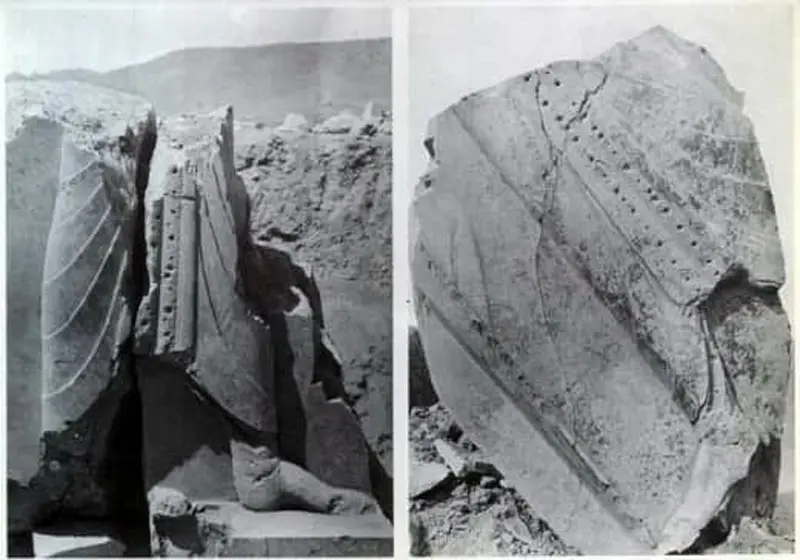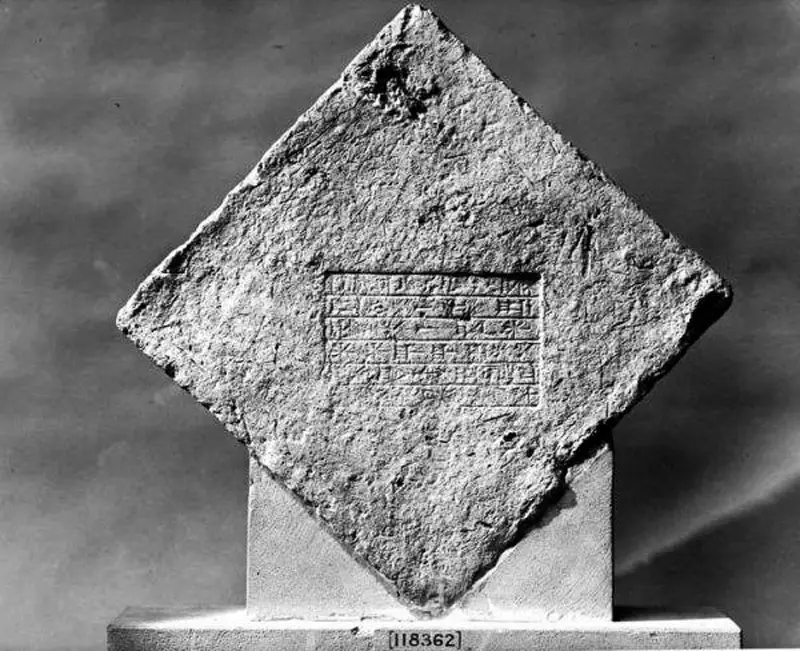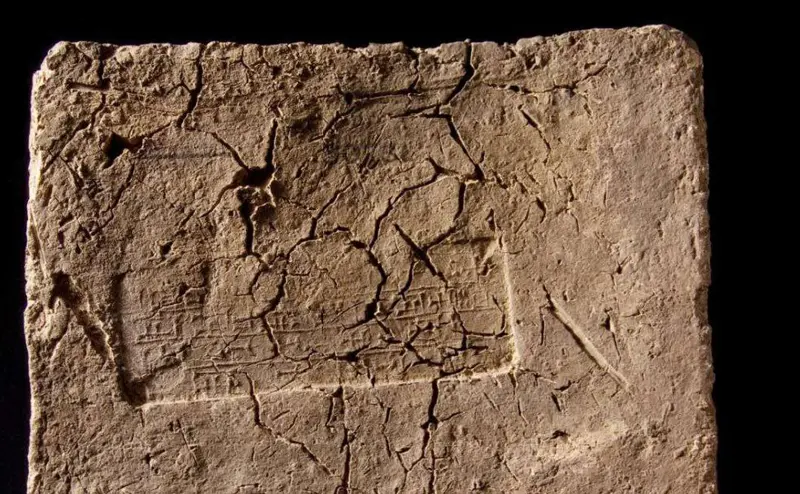The inscriptions discovered from Cyrus the Great have left important information about Achaemenid history.
Note Ancient inscriptions are always considered one of the valuable historical treasures that provide us with a lot of information about past civilizations. The most famous ancient inscription related to Cyrus the Great is the Cyrus Charter or Cyrus Cylinder. However, other inscriptions and brick writings have also been discovered over the years that are related to Cyrus the Great, and there are various information about some of them that may be interesting to the general public and unknown at the same time; including the information related to the inscriptions of Cyrus the Great in Pasargad and the brick writings of Ur and Uruk. On the occasion of the 7th of Aban and honoring Cyrus the Great, in this note we will examine the inscriptions of this Achaemenid king discovered in Pasargad, Ur and Uruk.
Inscription CMa
The first part: the inscriptions of Cyrus the Great in Pasargad
A total of three groups of inscriptions from the Achaemenid period contain the name of Cyrus the Great. The first and second groups are made up of the discovered inscriptions from Mesopotamia (Babylon, Ur, and Uruk) in (late) Babylonian script and language. The third group is the mostly trilingual inscriptions in Pasargadae, codenamed CM. The inscriptions containing the name of Cyrus in Pasargad were previously divided into three groups with the codes CMa, CMb and CMc respectively.
1. CMa group: a common text (I, Cyrus, Achaemenid king) in three languages (in order from top to bottom) ancient Persian (in two lines), Achaemenid Elamite and Achaemenid Babylonian (in one line each). At least three inscriptions located (at the R gate and the private palace and the public palace) and a large number of fragmentary inscriptions from this group indicate that there were at least 18 copies of this inscription throughout the Pasargad site.
2. Inscription CMb: This fragment is from a robe and is most likely related to a statue, and it is also possible that the statue is similar to the statue of Darius discovered in Susa. The inscription is in ancient Persian language, but the remains and signs are not enough to determine its definite belonging to an Achaemenid king. This piece was originally attributed to Cyrus, but later it was attributed to Darius.
3. Group CMc: The inscriptions of the third group are written on the folds of the Naqsh Shah’s robe. (Inscription text: Cyrus, Shah Bozor, Achaemenid) At least three copies of this group have been found. All three versions contain Elamite and Babylonian text and lack ancient Persian text. It is possible that the ancient Persian version of these inscriptions was placed in a place where it was lost (probably in the upper part of the inscription or on the metal plates that were on the robe).

Inscription CMc
There has been a lot of debate about which period the CMa and CMc inscriptions belong to. The first point that attracted the attention of the researchers of that time is the non-use of the word “great” after “king” in the CMa inscription, which was not very common in the known Achaemenid inscriptions, and thus researchers in the second half of the 19th century to the beginning of the 20th century Three different opinions were raised about the person introduced in the CMa inscription:
1. Cyrus the Great
2. Cyrus, the brother of Ardeshir II (known as Cyrus the Small)
3. Achaemenid, brother of Khashoggi and governor of Egypt
The general debate is whether the inscriptions belong to Cyrus the Great or were written in the name of Cyrus the brother of Ardeshir II. Proponents of the first theory, such as Georg Friedrich Grotfand (the first discoverer of the ancient Persian cuneiform code), believed from the very beginning of deciphering these inscriptions that the name Cyrus in these inscriptions refers to Cyrus the Great.
But Christian Lassen later proposed another theory that these inscriptions were written in memory of Cyrus the Younger, which was accepted by many people such as Weissbach. His argument was based on the fact that the inscriptions were written in the name of Cyrus the Younger and at the command of his mother Priestis (Παρύσατις).
In 1906, Ernst Emil Herzfeld entered into this debate and in his report from Pasargad referring to these inscriptions, he rejected the theory of Cyrus the Younger and confirmed the opinion of advanced researchers that these inscriptions were written in the name of Cyrus the Great. With the establishment of this theory, another important discussion is raised; Assuming that the mentioned inscriptions were written in the name of Cyrus the Great and at his command, then the invention of ancient Persian cuneiform and its use in Achaemenid inscriptions should be taken back to the era before Darius the Great, while the written evidence before Darius the Great in this regard are very limited and few.
People like Walter Hintz, who believed in the invention of this script during the time of Darius, proposed another theory that the Pasargad inscriptions were written in the name of Cyrus and during the time of Darius. Carl Nilander was one of the few people who wrote a detailed article against this theory and doubted the issue of writing an inscription in the name and memory of Cyrus the Great during the time of his successors.
After him, people like David Stronach and Rudiger Schmidt also addressed this issue. Today, many researchers are unanimous about the CMa group, which was written in the era after Cyrus the Great and in his name, but there are still questions and doubts about the CMc inscriptions.

Brick written by Cyrus the Great in Ur
Second part: Brick inscriptions of Cyrus the Great discovered from the cities of Ur and Uruk
Except for the inscription of Cyrus the Great in Babylon and the inscriptions of Pasargad, two other groups of texts named after Cyrus have been found from the ancient cities of Ur and Uruk (in present-day Iraq). Both groups of inscriptions are on bricks, and the inscriptions engraved on them were originally in stampi form. In this way, the inscriptions were pressed on the big seals and on the clay. Next, we introduce the brick inscriptions of Cyrus the Great in Ur.
So far, two copies of this brick inscription have been discovered in the city of Ur. One copy is kept in the British Museum in London and the other in the University of Pennsylvania Museum. These brick inscriptions were found in the excavations of the city of Ur under the supervision of Leonard Woolley for the British Museum and the Museum of the University of Pennsylvania during the years 1922-1934. Specifically, the date of the discovery of these inscriptions belongs to the first phase of Woolley’s excavation in the ancient hill of Ur, the ziggurat of the city and the surrounding wall (the wall of Nebuchadnezzar II). The place where these inscriptions were discovered is also in the same section (that is, the late wall around the ziggurat and around a gate).
The dimensions of the brick are 32.5 cm x 32 cm, with a thickness of 5.6 cm, and the dimensions of the inscription on it are 6 cm x 32 cm. This inscription is written in 6 lines in Late Babylonian (6th century BC onwards) and Old Babylonian cuneiform (1500-1000 BC). The script of this brick inscription (along with the Uruk brick inscriptions) is completely different from the cuneiform script written on the Cyrus cylinder (Late Babylonian).
Also, regarding the words and phrases used in this brick inscription and comparing them with the text of the Cyrus cylinder, many cases can be mentioned, two of which are mentioned below. Most of these differences are due to the shortness of the text and the different function of this writing brick compared to the Cyrus cylinder.
1. In the Cyrus cylinder (line 20), the king uses the words “the king of the world, the great king, the mighty king, the king of Babylon, the king of the land of Sumer and Akkad, the king of the four corners of the world” in his introduction. While the inscription on the brick is limited to “Shah Jahan, Shah Anshan”.
2. The background of Cyrus is fully introduced in the text of the cylinder (line 21): “Son of Kambojie, the great king, Shah Anshan, the grandson of Cyrus, the great king, Shah Anshan, the great-grandson of Shishpish, the great king, Shah Anshan”. While in this brick, the writing is limited to “Son of Kambojie, Shah Anshan”.

Inscription brick related to Cyrus the Great discovered in the ancient city of Uruk, British Museum copy
It should be mentioned that two bricks with inscriptions related to Achaemenid Cyrus have been discovered in the ancient region of Uruk in present-day Iraq. According to the available information, an inscription brick is kept in the British Museum, and another copy is located in the Oriental Museum near Berlin.
This inscription is written in four lines in Late Babylonian and Old Babylonian script. Its text says:
Cyrus, the king of the lands, the lover of Esgil (the temple of the god Marduk) and Ezida (the temple of the prophet God), the son of Kambojaya, I am the mighty king.
After the Second World War, it was found that some of the properties of the Berlin museums were looted, and the brick version of Cyrus the Great related to Uruk is among the objects that have since disappeared and no information is available about it.
Taken from Diwan Resalat channel
The cover photo is taken from the figure of the winged man attributed to Cyrus the Great
RCO NEWS














